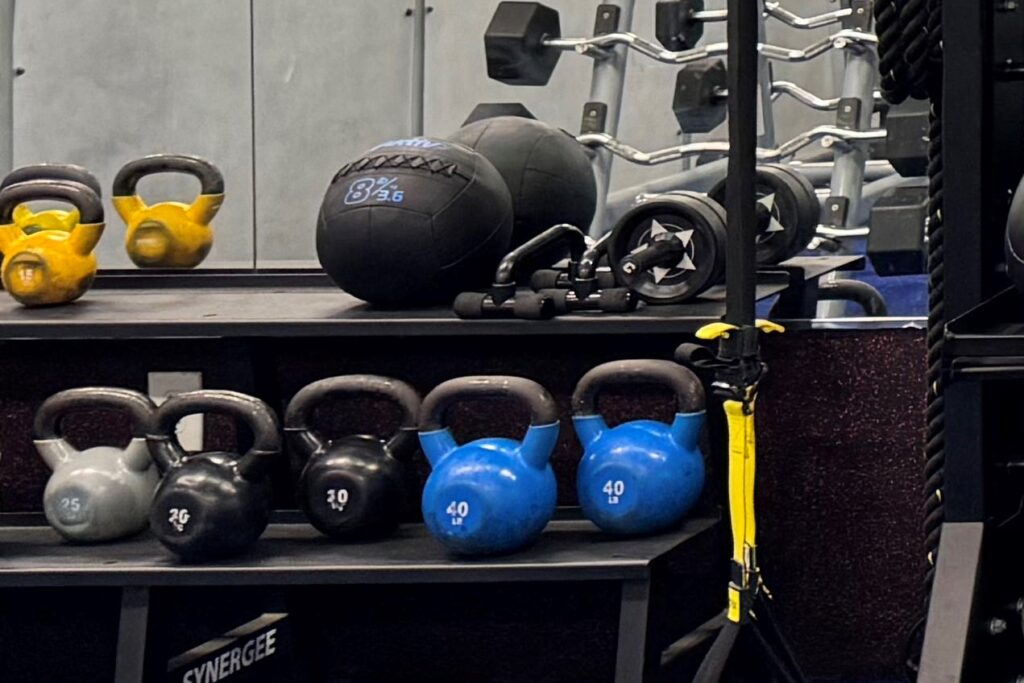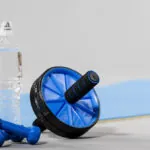Kettlebells aren’t just a fitness trend; they’re a dynamic tool to boost your leg strength, power, and endurance. Whether you’re an athlete looking to enhance your performance or a fitness enthusiast aiming to build a stronger, more resilient lower body, kettlebell exercises can transform your training regimen.
These versatile weights offer a unique combination of resistance training with dynamic movement, helping you target muscles that are often neglected by conventional workouts. In this guide, we’ll explore some of the top kettlebell leg exercises that can help you develop explosive power and endurance, ensuring you get the most out of your workout time.
Why are kettlebells effective for leg workouts?
Using kettlebells for leg workouts harnesses these benefits effectively. The added weight and movement dynamics challenge your legs, hips, and core, offering a comprehensive workout that not only builds muscle but also enhances flexibility and endurance. Moreover, kettlebell exercises can be modified for any skill level, making them a versatile addition to any fitness routine.
Kettlebell Leg Exercises
Squats
- Kettlebell front squats: This exercise is perfect for targeting the quads, glutes, and core. Begin by holding the kettlebell with both hands at chest level. Position your feet shoulder-width apart. Lower into a squat, keeping your back straight and chest up. Push through your heels to return to the starting position.
- Sumo squats with kettlebell: Ideal for the inner thighs and glutes, start with your feet wider than shoulder-width apart, toes pointing outward. Hold the kettlebell with both hands in front of you. Squat down, keeping your knees aligned with your toes, and rise back up to start.
Lunges
- Kettlebell lunge pass through: Enhance your balance and coordination with this dynamic lunge. Start in a standard lunge position with a kettlebell in one hand. As you lunge, pass the kettlebell underneath your front leg to the other hand. Alternate legs and repeat.
- Kettlebell reverse lunges: This variation targets your glutes and hamstrings while reducing stress on your knees. Start standing with the kettlebell in your chest. Step back into a lunge, lowering your hips until the rear knee nearly touches the ground. Push through the front heel to return to the start.
Deadlifts
- Single-leg kettlebell deadlifts: Focus on your hamstrings and balance. Stand on one leg, holding a kettlebell in the opposite hand. Lean forward, extending the free leg behind you for balance. Lower the kettlebell toward the ground, then return to standing.
- Conventional kettlebell deadlifts: Great for the back, glutes, and legs. Place the kettlebell between your feet. Bend at the hips and knees, grasp the kettlebell, and lift by straightening your legs, keeping your back flat.
Swings
- Single-arm kettlebell swings: Engage your entire posterior chain. Hold the kettlebell with one hand, swing it backward between your legs, and then thrust your hips forward to swing the kettlebell up to chest level. Switch hands at the top or after a set.
- Double kettlebell swings: Increase the intensity by using two kettlebells. The movement remains the same as the single-arm swing but requires more power and coordination.
Others
- Kettlebell step-ups: Work your quads and glutes by stepping onto a raised platform while holding a kettlebell by your side.
- Kettlebell calf raises: Hold a kettlebell and raise your heels off the ground, focusing on the calf muscles.
If you need more ideas for your workouts, make sure to check out our blog posts.
Can kettlebell exercises replace weight lifting?
Kettlebells are a versatile piece of equipment and can be an effective alternative to traditional weight lifting, depending on your fitness goals. If you’re aiming to improve functional strength, flexibility, and endurance, kettlebells can offer comprehensive benefits. They engage multiple muscle groups simultaneously, mimicking movements you might perform in daily life or sports, which can lead to improved performance outside the gym.
However, if your goal is maximum strength or significant muscle mass, traditional weight lifting might be more effective. Weight lifting allows for precise load adjustments and typically targets specific muscle groups more intensely than kettlebell training. Ideally, a combination of both kettlebell exercises and weight lifting would provide a well-rounded fitness regimen, incorporating the best aspects of functional and strength training.
Final thoughts
Kettlebell exercises offer a unique blend of strength, flexibility, and endurance training that can significantly enhance your lower body capabilities. Whether incorporated as a part of a diverse workout regimen or used as a primary training tool, kettlebells can help you achieve remarkable fitness results. Remember, the key to success with kettlebells, like any exercise program, involves consistency, proper technique, and progressively challenging your body.





